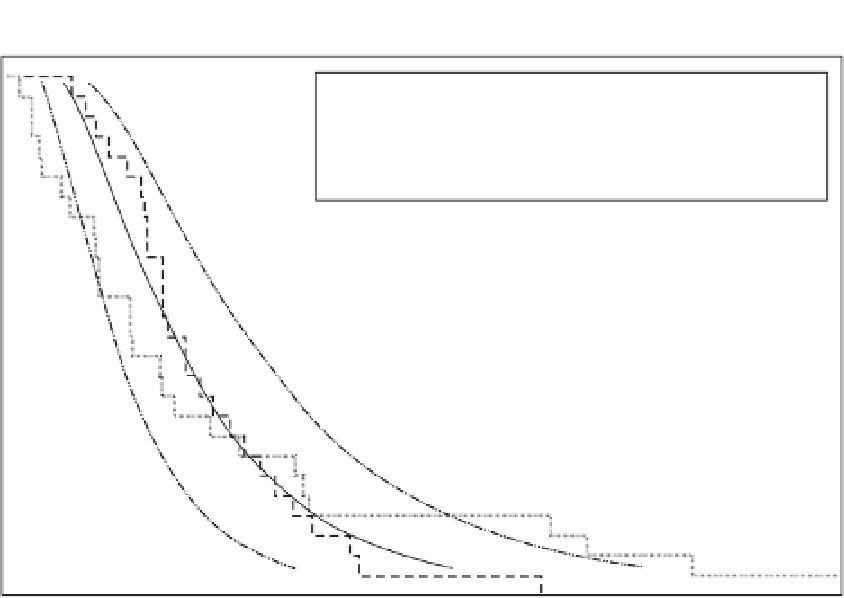Geology Reference
In-Depth Information
1.0
Observed empirical distribution function
Risse
et al.
(1993) Empirical distribution function
Simulated 50th percentile
Simulated 90% confidence interval
0.9
0.8
0.7
0.6
0.5
0.4
0.3
0.2
Observed
maximum = 83
0.1
0
0
5
10
15
20
25
30
Annual soil loss (kg/m
2
)
Fig. 4.1
Summary of the distribution of complementary cumulative distribution functions from multiple
model runs of the USLE, describing uncertainty due to lack of knowledge (epistemic uncertainty)
(after Hession
et al
., 1996).
be honest about model predictions/capabilities
(Hession
et al
., 1996).
Parallel developments of the European Soil
Erosion Model (EUROSEM; Morgan
et al
., 1993)
also involved a first attempt at evaluating model
uncertainty through the work of Quinton (1994,
1997) which explored two parameterization meth-
ods to reduce model uncertainty. The first method -
Improved Parameter Set Selection (IPSS) - selected
four sensitive parameters (whilst all others were
held constant) and varied each parameter five
times, to give a total of 625 model runs to
explore model uncertainty and how it might be
affected by differing parameterization strategies.
Evaluation of the model runs against a 'training'
dataset was then used to select optimal parameter
values, which could be used for subsequent model
runs in an effort to reduce model uncertainty.
The second method used observed hydrographs
to generate parameter values for the constant
saturated hydraulic conductivity parameter,
which resulted in better prediction of the event
hydrograph, although not the sedigraph or ero-
sion predictions (see Fig. 4.2).
Quinton (1997) concluded that, using these
techniques, it is possible to reduce the width of
the uncertainty bounds describing model per-
formance, but that in so doing, the observed
data that are being predicted more often fall out-
with the revised uncertainty bounds. The author
also calls for erosion model applications to be
accompanied by uncertainty analysis, and
stresses that “… not doing so misleads the user
into believing that the model output is more
certain than is actually the case” (Quinton,
1997). This approach is partly demonstrated
with the EUROSEM model in Folly
et al
. (1999),
Veihe and Quinton (2000) and Veihe
et al
. (2000),


















































